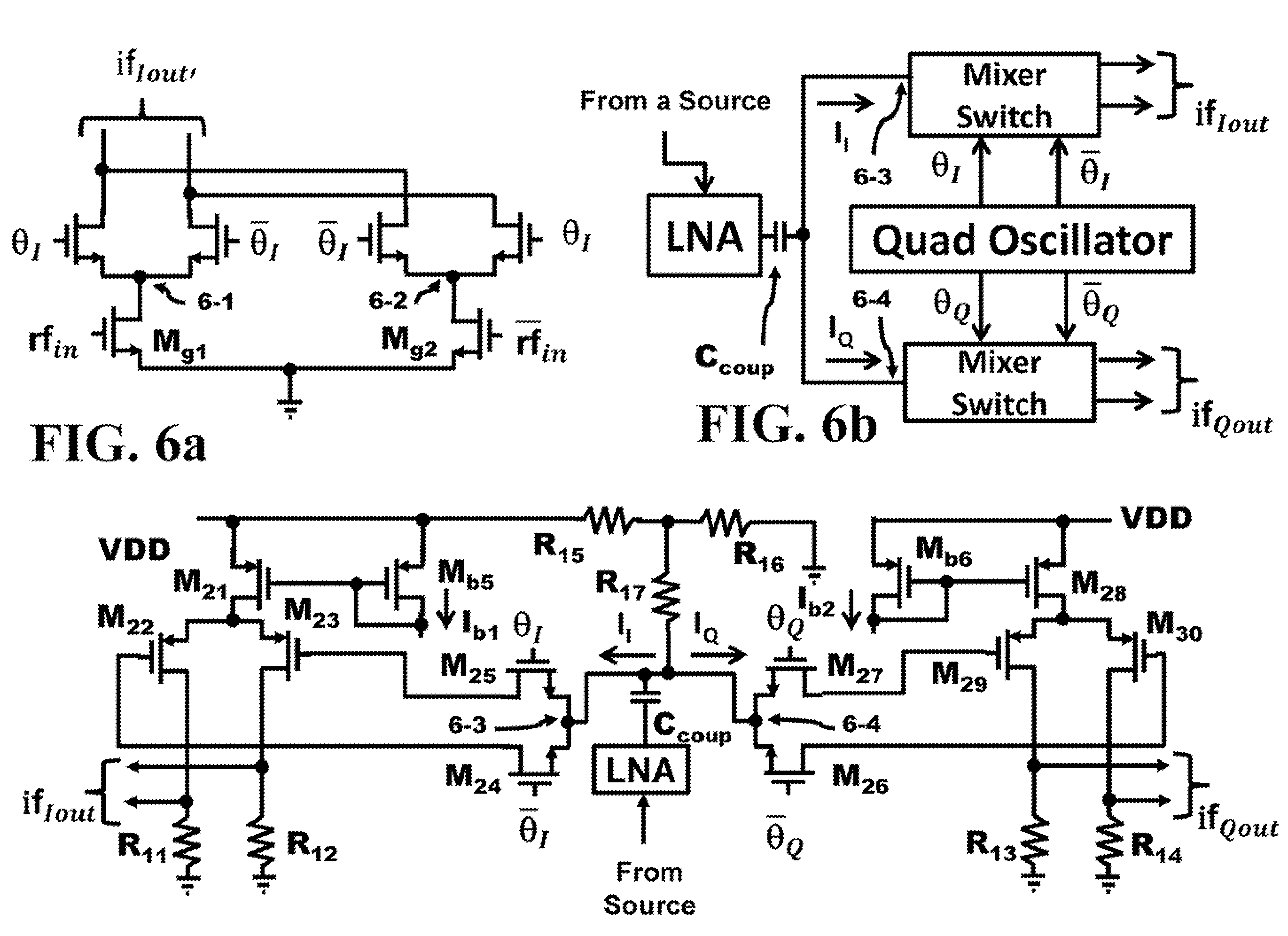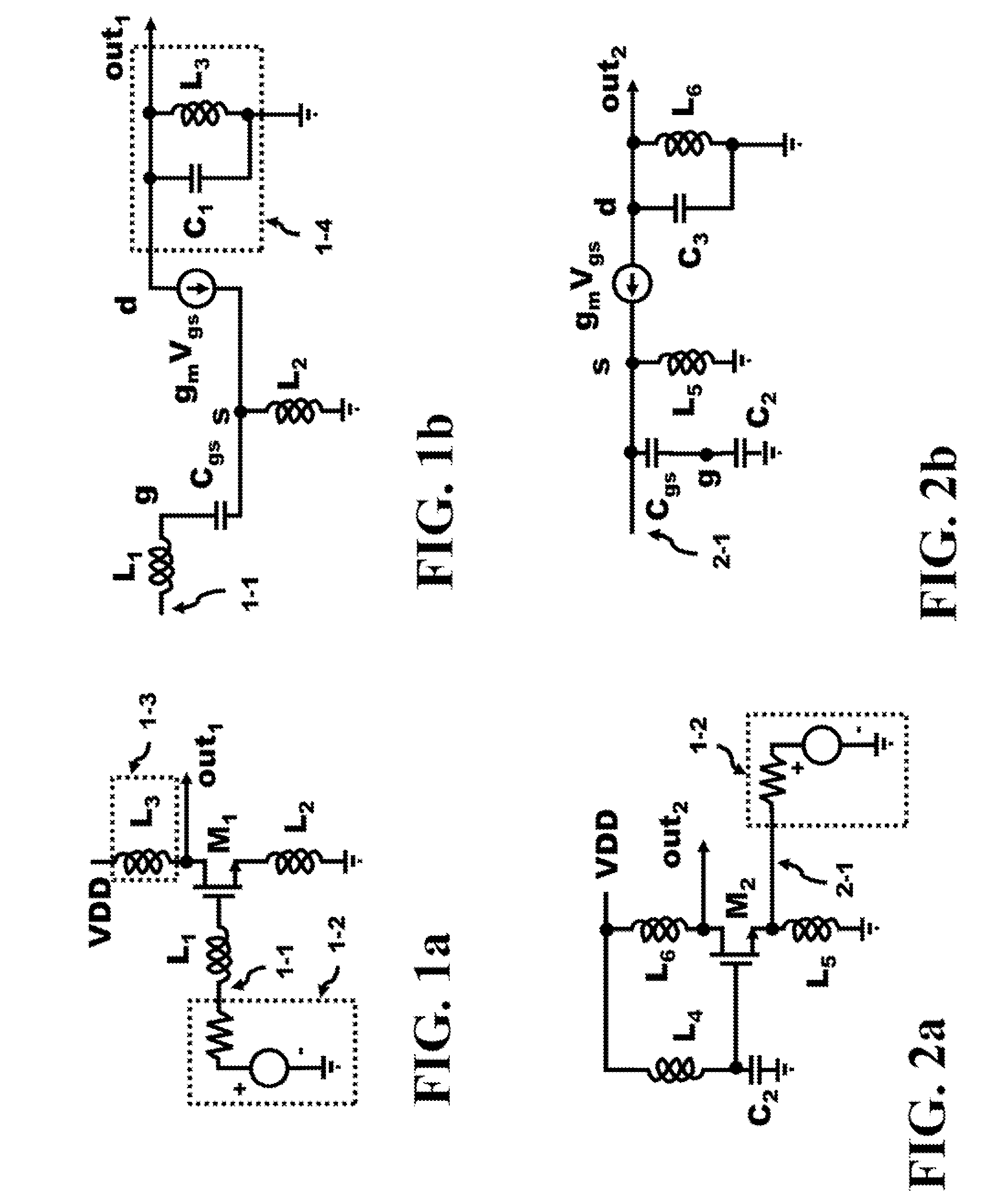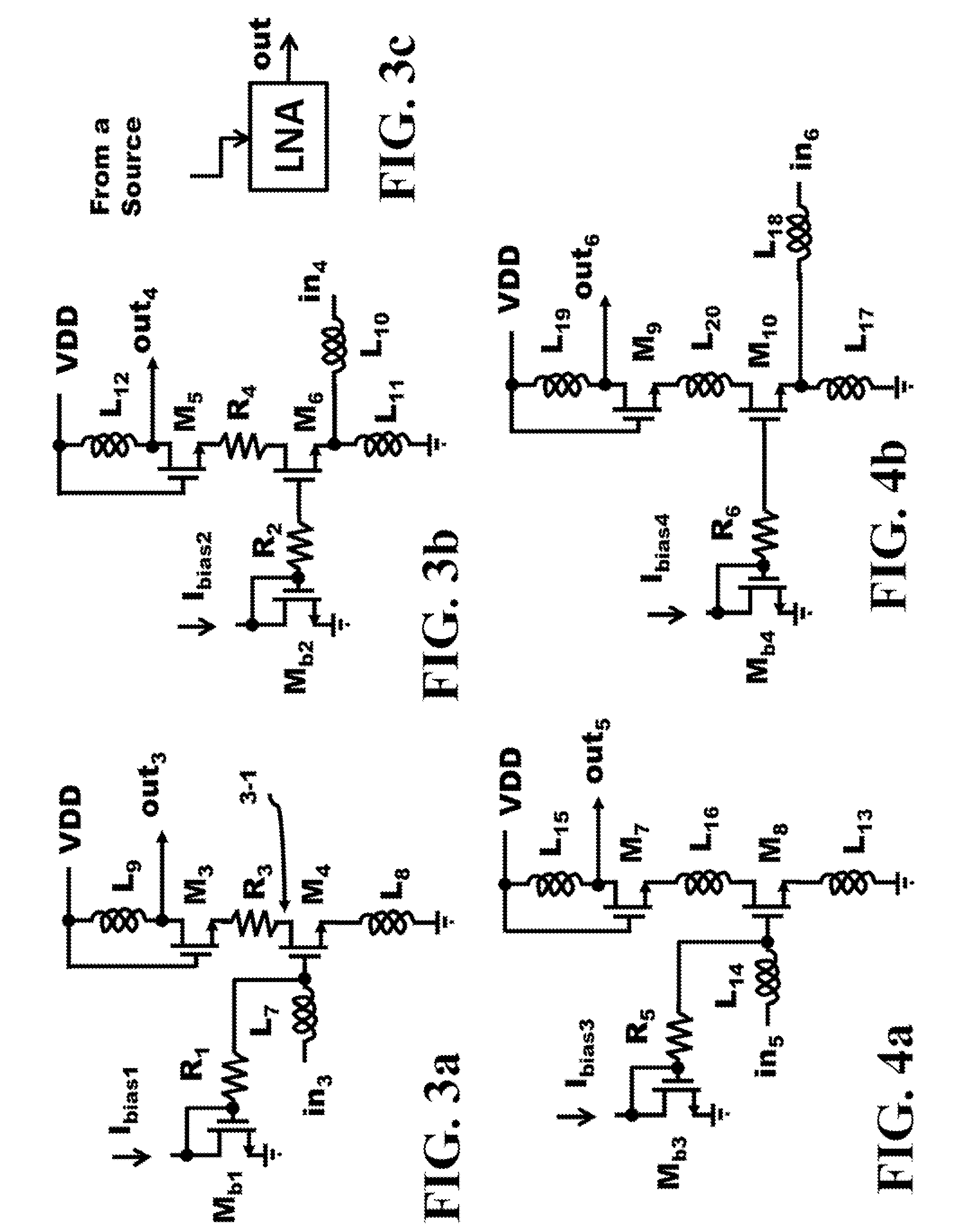Method and Apparatus of an Input Resistance of a Passive Mixer to Broaden the Input Matching Bandwidth of a Common Source/Gate LNA
a passive mixer and input resistance technology, applied in low noise amplifiers, rf amplifiers, transmission and other directions, can solve the problems of large physical displacement between the lower cascode device of the lna, and achieve the effects of reducing the width of the upper cascode device, reducing the center carrier frequency of the lna, and reducing the q (or quality factor) of the resonant circui
- Summary
- Abstract
- Description
- Claims
- Application Information
AI Technical Summary
Benefits of technology
Problems solved by technology
Method used
Image
Examples
Embodiment Construction
[0036]The inventions presented in this specification can be used in various high frequency system designs. Some of the basic circuits for an analog amplifier include the common source and common gate structures as illustrated in FIG. 1a and FIG. 2a, respectively. The common source configuration of a LNA (Low Noise Amplifier) in FIG. 1a illustrates a voltage source 1-2, a voltage in series with a resistor, that can represent the output of an antenna or another source of an extracted signals. The output 1-1 of the voltage source 1-2 couples to the input of the gate of M1 by the gate inductance L1. The voltage source 1-2 provides the input frequency spectrum to the receiver. The source of M1 is coupled to ground by the inductor L2. At DC, the impedance of the inductor L2 is zero causing the source of M1 to be coupled to ground (GRD or VSS). This configuration is known as the common source. The drain of device M1 is coupled to VDD by a load 1-3, in this case, the inductor L3 and the out...
PUM
 Login to View More
Login to View More Abstract
Description
Claims
Application Information
 Login to View More
Login to View More - R&D
- Intellectual Property
- Life Sciences
- Materials
- Tech Scout
- Unparalleled Data Quality
- Higher Quality Content
- 60% Fewer Hallucinations
Browse by: Latest US Patents, China's latest patents, Technical Efficacy Thesaurus, Application Domain, Technology Topic, Popular Technical Reports.
© 2025 PatSnap. All rights reserved.Legal|Privacy policy|Modern Slavery Act Transparency Statement|Sitemap|About US| Contact US: help@patsnap.com



